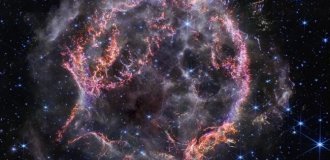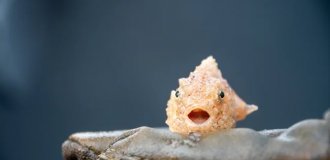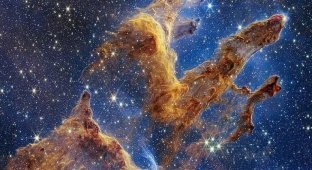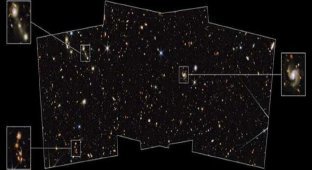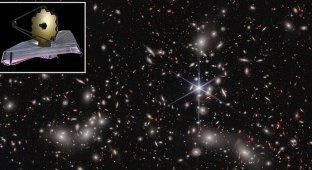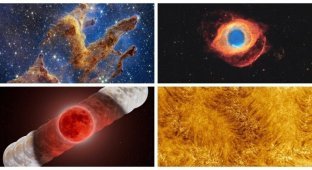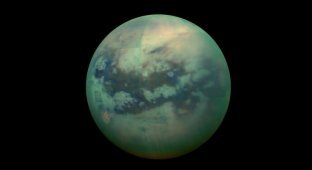The James Webb telescope sent a photo of Uranus to Earth (6 photos)
In the frame: the seventh planet from the Sun
Uranus 
The James Webb Infrared Space Telescope continues his work on shooting not only distant stars, but also the planets of the solar systems. After Jupiter and Neptune, the telescope photographed Uranus, the seventh planet from the sun. The image clearly shows 11 of the 13 surrounding the planet. rings, and the second photograph of the Webb, along with Uranus, captures and the six brightest of the 27 known moons of the planet.
Using the Near Infrared Camera (NIRCam) installed on the telescope made it possible to obtain a bright image, which shows some interesting details of Uranus's atmosphere. Big the light gray area on the right side represents the so-called the "polar cap" that occurs when the poles of Uranus are illuminated by the Sun, and disappearing with the arrival of autumn. Scientists expect that the images of "Webb" help explain the nature of this phenomenon. Two small bright spots on edge of the polar cap and to the left of it are clouds that form as considered to be in areas of storm activity.
Moons of Uranus 
Previously obtained images of other planets
Neptune and its rings 
These are the first images of Neptune in more than 30 years, in which the rings of the planet are visible, and the first ever photographs of Neptune taken in infrared range.
7 of the 14 known moons of Neptune 
The brightest of them in the sent photographs looks like Triton - the largest of the moons of the planet, covered with nitrogen ice, reflects the sun light and looks like a distant star.
Jupiter 
Both photographs show the auroras over the northern and the south poles of the fifth planet from the Sun. Jupiter's Great Red Spot which is a gigantic atmospheric vortex, in the pictures It is white, like Jupiter's clouds that reflect sunlight. Bright white in pictures means the subject is high above the surface of the planet.
Neighborhood of Jupiter 
In the photograph covering the vicinity of Jupiter, you can see rings of the planet and two Jupiter satellites (Amalthea and Adrastea). On Several galaxies are visible in the background.


